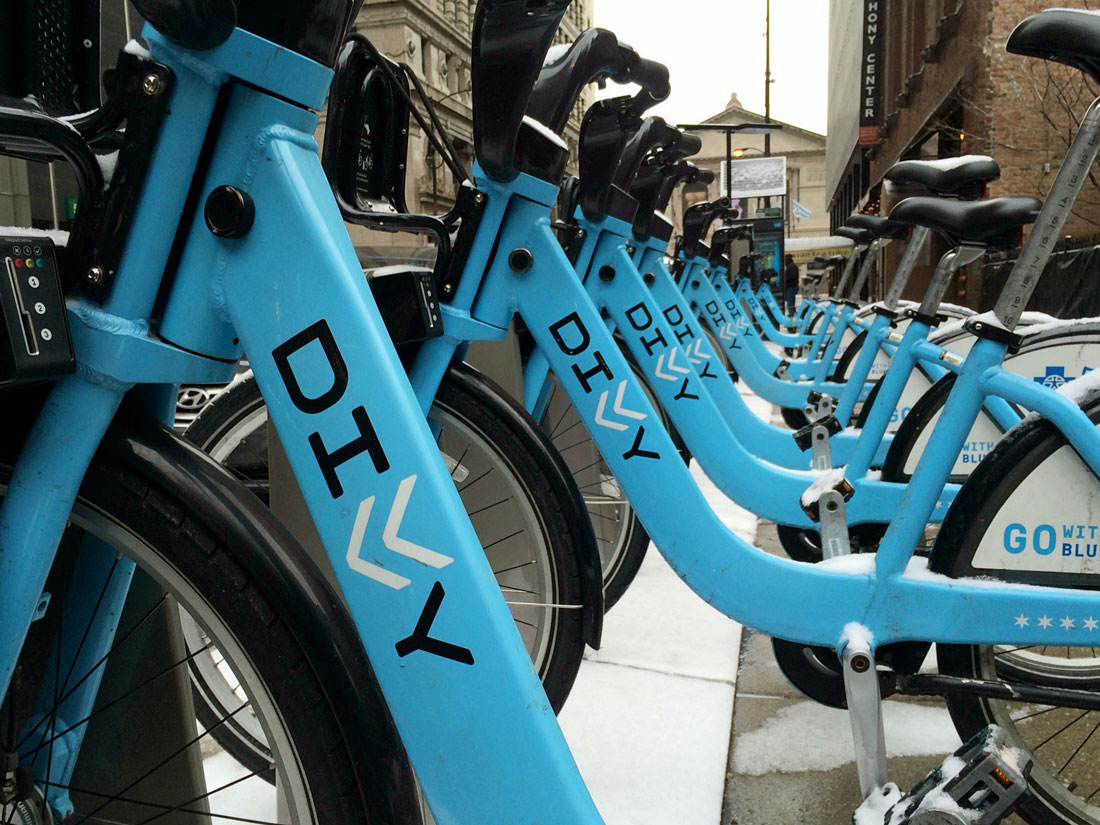By Jenny G. Zhang
In the next major expansion of Divvy, Chicago’s popular bike sharing program will extend to the south and west sides, as well as two suburbs, with the addition of 75 new bike stations and nearly 1,000 bikes in summer 2016, Mayor Rahm Emanuel announced recently.
Plans include 40 stations in the South Side and Southwest Side neighborhoods of Burnside, Chatham, Greater Grand Crossing, Brighton Park and Englewood, as well as 35 in Austin, Garfield Park and Rogers Park. The stations will help provide connections to 13 new stations in Oak Park and eight in Evanston.
A $3 million state grant from the Illinois Department of Transportation will cover 80 percent of the expansion cost. Oak Park and Evanston, the first municipalities to enjoy Divvy outside of Chicago’s borders, must each match the grant to make up the remaining 20 percent of the cost. Both municipalities will establish their own separate contracts with Divvy system operator Motivate International to ensure that the City of Chicago does not incur further costs due to suburban operations.
After this next expansion, Divvy, which is the largest bike share system in North America in terms of geographic area, will offer a total of 571 stations and more than 5,700 bright blue bikes, compared to the existing 475 stations and 4,750 bikes mostly concentrated downtown and in the lakefront neighborhoods on the North Side.
In conjunction with the Divvy expansion, the city is committed to installing 50 miles of better bike lanes over the next four years, adding to the 292 miles of designated bike lanes that exist now.
“Bike share systems can only operate effectively when users are able to connect from one station to another,” Chicago Department of Transportation (CDOT) Director of Public Affairs Mike Claffey wrote in an email, “which is why the system must be expanded outward incrementally.”
[field name=”map”]
“It’s pretty exciting,” said 16th Ward Alderman Toni Foulkes, who recently had her first phone meeting with CDOT to discuss the addition of new stations in Englewood.
She said the expansion make sense, seeing how much the existing Divvy bikes are being used by residents now. Bikes can cost upwards of $300, Foulkes added, so many people don’t own bikes of their own.
Last year, in an effort to make Divvy more accessible to lower-income people, the city launched the “Divvy for Everyone” program, which allows Chicagoans with incomes under 300 percent of the federal poverty level to pay only $5 for a one-year Divvy membership.
Since the program’s July launch, enrollment numbers have surpassed 1,100 and are expected to continue to rise, according to Claffey.
“Divvy for Everyone” members make up only a small percentage of Divvy’s annual membership of nearly 32,000, according to CDOT Commissioner Rebekah Scheinfeld.
“Divvy’s popularity is evident from its ridership numbers,” CDOT Commissioner Rebekah Scheinfeld said in a press release. “It’s clear that Divvy has become an integral part of Chicago’s transportation network.”
Divvy logged almost 3.2 million trips in 2015, up by 30 percent compared to 2.4 million recorded trips in 2014. The system is used year-round, even in Chicago’s winter chill. According to Scheinfeld, more than 900 rides were taken on January 10 despite temperatures that ranged between 4 and 27 degrees Fahrenheit.

“The fact that [Divvy’s] survived this long is a testament that it’s being used and people want it,” said Elizabeth Adamcyzk, chair of Women Bike Chicago, an organization that encourages women in Chicago to enjoy biking for transportation and recreation.
In her opinion, keeping the system affordable, conveniently located, and well maintained is vital to Divvy’s continued success.
But no matter what may happen in the future, Adamcyzk added, Divvy’s impact can already be seen.
“People’s ideas of transportation and getting around are being challenged,” she said.


